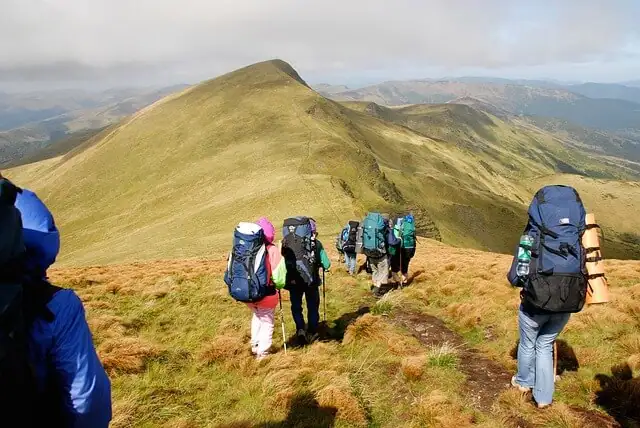
What is adventure tourism and why is it more sustainable?
Adventure tourism involves exploring natural environments and engaging in physical activities such as hiking, rock climbing, rafting, and more. This type of tourism appeals to travelers who seek thrilling and unique experiences while connecting with nature. Adventure tourism is often more sustainable than other forms of tourism because it promotes the conservation of natural resources and supports local communities.
Adventure tourism typically involves small groups of travelers who interact more intimately with the environment and local cultures. This type of tourism can provide economic benefits to local communities while also raising awareness about the importance of conservation efforts.
What is adventure tourism?
Adventure tourism is the migration of individuals from one region to another outside of their comfort zone for exploration or travel to distant locales, exotic locales, and potentially hostile locales. Taking part in adventurous activities like skydiving, mountain climbing, and scuba diving is known as adventure tourism.
History Adventure Tourism
Adventure tourism has been around for a long time, dating back to ancient times when explorers and adventurers embarked on daring expeditions. In the Middle Ages, it was primarily associated with pilgrimages to holy sites.
In the 19th century, hunting and fishing trips became popular among the wealthy. With the emergence of new technologies in the 20th century, adventure tourism became more accessible to the general public.
Today, adventure tourism is a thriving industry that offers a wide range of activities and experiences for people of all ages and backgrounds who seek to challenge themselves and explore new places. So if you’re looking for some excitement, consider trying out adventure tourism.
Types of Adventure tourism
It has increased dramatically in recent years, with travelers exploring previously unexplored locations all over the world. This enables a new location to present itself as genuinely unique, attracting tourists seeking out exceptional experiences.
Activities that are part of adventure tourism include caving, hiking, sailing, trekking, and more. There are two types of adventure tourism. They include the following.
Hard Adventure
Activities that are categorized as hard adventure require individuals to possess advanced skills and a significant level of commitment due to the high levels of risk involved. Examples of such activities include climbing mountains, rocks, ice, trekking, and caving. Participating in hard tourism requires professional guidance and a mastery of advanced level skills.
Unfortunately, many tourists lose their lives while engaging in these activities on a daily basis. It is noteworthy that, for K2, the second-highest mountain in the world, one person dies for every two people who successfully reach the summit.
Soft Adventure
Soft adventure activities are considered to have low levels of risk and require minimal commitment and basic skills. These activities are typically led by experienced guides and include backpacking, camping, hiking, kayaking, and other similar activities. Soft tourism, which encompasses these activities, is a popular category within the adventure tourism industry. It is interesting to note that approximately 25% of all trips taken from North America and Europe are soft adventure trips.
Characteristics and Importance of Adventure of Tourism
Adventure tourism is a type of travel that involves outdoor and physically demanding activities that often carry an element of risk. The importance and characteristics of adventure tourism include.
- Promotes Physical Health.
- Provides Thrilling Experiences.
- Encourages Environmental Awareness.
- Supports Local Economies.
- Requires Professional Guidance.
- Involves Risk.
- Fosters Personal Growth.
Promotes Physical Health
It promotes physical fitness by encouraging travelers to engage in activities such as hiking, trekking, rafting, and other physically demanding outdoor activities.
Provides Thrilling Experiences
It provides unique, thrilling experiences that allow travelers to step out of their comfort zone and challenge themselves both mentally and physically.
Encourages Environmental Awareness
It often takes place in natural environments, such as mountains, forests, and water bodies. This provides opportunities for travelers to learn about and appreciate the natural world, and encourages them to become more environmentally conscious.
Supports Local Economies
It can provide a significant boost to local economies by creating employment opportunities and supporting local businesses that provide goods and services to tourists.
Requires Professional Guidance
Many adventure tourism activities, such as mountaineering, rock climbing, and white-water rafting, require professional guidance and training to ensure the safety of participants.
Involves Risk
Adventure tourism involves a certain level of risk and uncertainty, which makes it an attractive option for travelers seeking unique experiences and challenges.
Fosters Personal Growth
Adventure tourism can be a transformative experience that fosters personal growth, self-discovery, and a sense of accomplishment.
Why is adventure tourism more sustainable?
It can be more sustainable than other forms of tourism for several reasons.
- Encourages conservation efforts.
- Supports local communities.
- Minimizes environmental impact.
- Provides education and cultural exchange.
Encourages conservation efforts
It often involves exploring natural areas such as national parks, forests, and protected areas. This can increase awareness of the value of these areas and encourage conservation efforts to protect them.
Supports local communities
Adventure tourism can benefit local communities by creating job opportunities and generating income for local businesses. This can help to reduce poverty and improve the standard of living for people in the area.
Minimizes environmental impact
Adventure tourism activities such as hiking, kayaking, and cycling are generally low-impact and do not require the development of large-scale infrastructure. This can minimize the environmental impact of tourism on the area.
Provides education and cultural exchange
It can provide opportunities for travelers to learn about local cultures and traditions, and to engage with local communities. This can promote cultural exchange and understanding.
Conclusion
Adventure tourism involves physically demanding activities in natural environments and can provide unique, thrilling experiences while promoting physical health, environmental awareness, and personal growth. It can be more sustainable than other forms of tourism as it encourages conservation efforts, supports local communities, minimizes environmental impact, and provides education and cultural exchange opportunities.
You may like:




